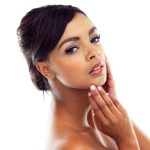As men age, maintaining prostate health becomes increasingly important. Exercise plays a significant role in this process, yet many are unsure where to begin. Tailoring fitness routines specifically for men over 65 can offer effective strategies to enhance well-being and protect prostate health. Discover how simple adjustments to your exercise regimen can lead to significant benefits, empowering you to live a healthier, more active life. Embrace these essential fitness strategies to take charge of your health and vitality today.
Importance of Fitness for Men Over 65
Exploring the benefits of staying active as we age.
Also to see : Safe Volunteer Opportunities for Seniors 75+: Engaging with Younger Generations
Overview of Fitness Benefits
Engaging in regular fitness for older men is crucial. It enhances overall health, improves mobility, and reduces the risk of chronic diseases. Exercise also strengthens bones and muscles, which is essential for maintaining independence.
Prostate Health Benefits
Exercise plays a vital role in prostate health benefits. Physical activity has been shown to help manage weight, which is linked to a lower risk of prostate issues. A study suggests that men who stay active have a reduced chance of developing prostate problems. Including aerobic exercises and strength training can be particularly beneficial.
In parallel : Maximizing Senior Healthcare: Essential Strategies for Effective Use of Mobile Health Apps
Psychological Benefits
Staying active is not just about physical health; it significantly impacts mental well-being. For men over 65, exercise can alleviate symptoms of depression and anxiety, enhancing life satisfaction. The psychological benefits of fitness for older men include improved mood and cognitive function.
- Benefits of Exercise:
- Enhances mood and mental health
- Supports cardiovascular health
- Strengthens muscles and bones
Incorporating regular physical activity into daily routines is a powerful tool for aging gracefully. It encourages a healthier, more fulfilling lifestyle, addressing both physical and psychological benefits.
Tailored Exercise Routines
Crafting specialized exercise routines for seniors is essential to address unique needs. These routines focus on maintaining strength, flexibility, and cardiovascular health while reducing injury risks.
Cardiovascular Activities
Low-impact cardio options are ideal for older adults. Activities like walking, swimming, or cycling can enhance heart health without straining joints. Consistent cardiovascular exercises improve endurance and energy levels, making daily tasks easier. It's vital to choose activities that are enjoyable to ensure long-term adherence.
Strength Training
Incorporating strength training in exercise routines for seniors helps maintain muscle mass and bone density. Exercises such as resistance band workouts, light weightlifting, and bodyweight exercises like squats and lunges are effective. These activities support independence by improving balance and reducing fall risk.
- Recommended Strength Training Exercises:
- Resistance band bicep curls
- Chair squats
- Wall push-ups
Flexibility and Balance Exercises
Flexibility exercises are crucial for maintaining a wide range of motion and preventing stiffness. Yoga and stretching enhance flexibility and balance, which are critical for preventing falls. Simple practices like tai chi can also improve coordination and stability, fostering confidence in movement.
Tailoring these routines ensures they are safe, effective, and enjoyable for seniors, promoting an active and healthy lifestyle.
Evidence-Based Benefits for Prostate Health
Exploring the scientific link between exercise and prostate health.
Research on Exercise and Prostate Health
Scientific studies consistently highlight the exercise benefits for prostate health. Regular physical activity is associated with improved outcomes in prostate health, primarily due to its role in hormone regulation. Research indicates that men who engage in consistent exercise have lower levels of prostate-specific antigen (PSA), a marker often used to assess prostate health. This correlation underscores the importance of an active lifestyle in mitigating prostate issues.
Overview of Studies on Hormone Levels
Various studies have explored how exercise influences hormone levels, which are crucial for prostate health. Findings suggest that physical activity can help balance hormones such as testosterone and estrogen, reducing the risk of developing prostate-related conditions. For instance, a study published in a leading medical journal found that moderate to vigorous exercise significantly alters hormone levels, contributing to healthier prostate function.
- Key Findings:
- Lower PSA levels with regular exercise
- Improved hormone balance
- Reduced prostate issue risk
Long-Term Benefits
Maintaining an active lifestyle offers long-term exercise benefits for prostate health. Not only does it support hormone regulation, but it also aids in weight management, another critical factor in prostate wellbeing. By prioritizing regular exercise, men can proactively enhance their prostate health and overall quality of life.
Safety Tips for Exercise
Ensuring a safe and effective fitness routine for seniors.
Guidelines for Starting a New Exercise Routine
When embarking on a new exercise routine, it is crucial to prioritize exercise safety to prevent injuries. Begin by consulting a healthcare professional to tailor activities to individual health needs. Start with low-intensity exercises, gradually increasing intensity as fitness improves. Consistency is key, but listening to your body is equally important.
Importance of Warm-Up and Cool-Down
Incorporating a proper warm-up and cool-down is essential for injury prevention. A warm-up prepares the body for physical activity, increasing blood flow and flexibility. Simple activities like walking or gentle stretching can suffice. After exercising, a cool-down helps the body transition back to rest, reducing muscle stiffness and soreness.
- Warm-Up Tips:
- Light walking
- Dynamic stretches
- Joint rotations
Recognizing Signs of Overexertion
Understanding the signs of overexertion can prevent potential injuries. Symptoms such as dizziness, shortness of breath, or unusual fatigue indicate the need to pause and assess your body's limits. Maintaining a balance between challenge and comfort ensures a sustainable and safe fitness journey. Remember, gradual progress is more beneficial than pushing too hard, too quickly.
By adhering to these exercise safety measures, seniors can enjoy the benefits of an active lifestyle while minimizing risks.
Modifications for Common Health Issues
Adapting exercises for specific health conditions ensures safety and effectiveness for seniors.
Arthritis and Joint Pain
For individuals with arthritis and joint pain, exercise modifications are crucial. Low-impact activities like swimming or cycling can minimize stress on joints. Gentle stretching and yoga can improve flexibility and reduce stiffness. It's important to focus on exercises that enhance joint mobility without causing discomfort.
- Exercise Modifications for Arthritis:
- Swimming
- Cycling
- Gentle stretching
Heart Conditions
When dealing with heart conditions, senior fitness adjustments are necessary to maintain cardiovascular health safely. Walking and tai chi are excellent choices, providing gentle aerobic benefits. It's essential to monitor heart rate and avoid high-intensity workouts. Consulting with a healthcare provider can help tailor a safe exercise regimen.
- Safe Exercise Options for Heart Health:
- Walking
- Tai chi
- Light aerobic exercises
Mobility Limitations
For those facing mobility limitations, exercise modifications can enhance movement and independence. Chair exercises and resistance band workouts are effective strategies. These adaptations help maintain muscle strength and improve balance, supporting daily activities. Emphasizing gradual progress ensures a sustainable fitness journey.
- Strategies for Improving Mobility:
- Chair exercises
- Resistance band workouts
- Balance exercises
By incorporating these exercise modifications, seniors can safely engage in physical activity tailored to their health needs.
Dietary Advice to Complement Fitness
Enhancing fitness with the right nutrition for seniors.
Foods that Support Prostate Health
A prostate health diet is essential for seniors, focusing on foods rich in antioxidants and healthy fats. Incorporating tomatoes, rich in lycopene, can significantly benefit prostate health. Nuts and seeds, particularly those high in zinc, also play a crucial role. These foods support hormone balance and reduce inflammation.
Importance of Hydration and Balanced Meals
Hydration is vital for seniors, aiding in digestion and nutrient absorption. Drinking adequate water helps maintain energy levels and supports kidney function. Balanced meals combining lean proteins, whole grains, and vegetables ensure a comprehensive nutrition for seniors. This approach provides essential vitamins and minerals, promoting overall health and vitality.
Nutritional Supplements and Their Role
While a balanced diet is fundamental, some seniors may benefit from nutritional supplements. Omega-3 fatty acids, vitamin D, and calcium are commonly recommended to support bone health and cardiovascular function. Consulting a healthcare provider can help determine the appropriate supplements based on individual needs.
- Key Supplements for Seniors:
- Omega-3 fatty acids
- Vitamin D
- Calcium
Prioritizing a healthy eating plan alongside regular exercise can significantly enhance seniors' quality of life, supporting both physical and prostate health.
Addressing Common Misconceptions
Exploring the truth behind fitness myths and aging.
Debunking Myths About Aging and Fitness
Misconceptions about aging and fitness myths often deter seniors from engaging in regular exercise. A prevalent myth is that older adults should avoid physical activity to prevent injury. However, research shows that exercise, particularly strength training, is essential for maintaining health and independence.
The Importance of Strength Training for Older Adults
Strength training is not only safe but crucial for seniors. It helps combat age-related muscle loss, enhances bone density, and boosts metabolism. Contrary to some misconceptions about aging, older adults can significantly benefit from resistance exercises.
- Benefits of Strength Training:
- Increases muscle mass
- Improves balance and coordination
- Reduces fall risk
Common Fears About Injury and Exercise
Despite fears, the risk of injury can be minimized with proper guidance and exercise modifications. Many seniors fear that exercise might exacerbate existing health conditions. Yet, with tailored routines and professional advice, these fears are often unfounded. Understanding these fitness myths can empower seniors to embrace an active lifestyle confidently.
Addressing these misconceptions about aging and exercise reveals the importance of staying active, ultimately enhancing the quality of life for older adults.
Consulting Healthcare Providers
Ensuring a safe and effective fitness journey with professional guidance.
Importance of Professional Guidance
Before embarking on a new fitness and health routine, consulting with a healthcare provider is crucial. This healthcare consultation ensures that any exercise plan aligns with existing medical conditions and personal health goals. Professional advice can help tailor activities to maximize benefits while minimizing risks, making it an essential step in integrating fitness into daily life.
What to Discuss with Healthcare Providers
During a healthcare consultation, it's important to address several key topics. Discuss your current fitness and health status, including any chronic conditions or medications. Ask about suitable exercises and any necessary modifications. Understanding these aspects allows for a personalized approach, ensuring that your fitness plan complements your overall health strategy.
- Key Discussion Points:
- Current health status
- Exercise recommendations
- Necessary modifications
Integrating Fitness into Existing Health Plans
Incorporating fitness into existing health plans requires careful planning. Work with your healthcare provider to develop a routine that supports your health objectives. This integration enhances overall well-being, promoting a balanced lifestyle. By aligning fitness and health goals with medical advice, you can achieve sustainable and effective results.
By prioritizing medical advice, you create a foundation for a safe and rewarding fitness journey.
Conclusion: Commitment to Health
Emphasizing the importance of lifelong fitness and proactive health.
Encouragement to Maintain a Consistent Routine
Maintaining a consistent fitness routine is vital for achieving senior wellness. By incorporating regular physical activity, seniors can enhance their quality of life and promote proactive health. A structured routine supports independence and longevity, making lifelong fitness a realistic and rewarding goal.
Community Resources for Seniors Seeking Fitness
Accessing community resources can greatly assist seniors in their fitness journey. Local gyms, senior centers, and wellness programs offer tailored activities, fostering a supportive environment for senior wellness. These resources provide not only physical benefits but also social engagement, crucial for maintaining motivation.
- Community Resources:
- Senior centers
- Local gyms
- Wellness programs
The Role of Support Systems in Achieving Health Goals
Support systems play a crucial role in achieving health goals. Family, friends, and community groups can encourage seniors to stay committed to their fitness routines. This network provides emotional and practical support, reinforcing the importance of proactive health.
By leveraging these support systems, seniors can remain engaged, motivated, and focused on lifelong fitness. This commitment ensures a healthier, more fulfilling lifestyle, emphasizing the importance of senior wellness in everyday life.











